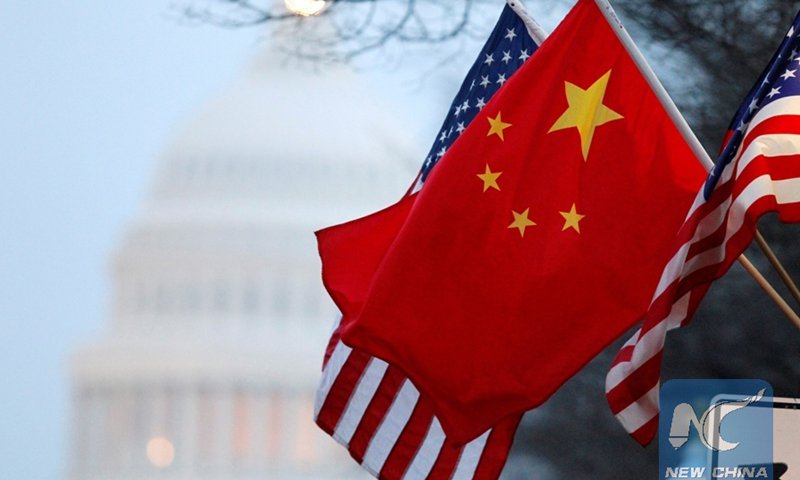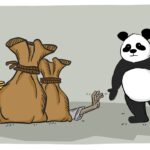Expectations rise for official engagement with Biden administration
Just days ahead of a power transfer in the US, several positive signs – from solid progress for the phase one trade agreement, encouraging words from China’s top leader, to the news of potential engagement between Chinese officials and the new US administration – emerged on Thursday, pointing to a potential shift in China-US trade ties away from an erratic approach by Donald Trump to a more predicable path under Joe Biden.
Among the positive signs was a rare, publicly released reply letter from Chinese President Xi Jinping to Howard Schultz, chairman emeritus of US coffee chain Starbucks.
In the reply dated January 6, the Chinese president said that China has embarked on a new mission to build a modern socialist country and that China will offer more room for companies from around the world, including US firms such as Starbucks.
Xi also encouraged Schultz and Starbucks to continue to play a positive role in promoting economic and trade cooperation between China and the US and the development of the bilateral relationship.
Xi’s letter was in reply to a letter from Schultz, in which Schultz congratulated China on remaining on track to achieving a moderately prosperous society under the leadership of President Xi, and expressed respect to the Chinese people and culture.
The former Starbucks CEO has repeatedly praised China’s development prospects as well as the company’s success in the world’s second-largest economy.
The reply to a “friendly face” was likely aimed at sending a strong signal, just days ahead of the Biden administration, that China was open to engaging with the US business community and pursuing win-win cooperation, Chinese analysts said.
The message contains two dimensions: one, more access would be offered to foreign firms to expand the scope of cooperation; and two, deepening existing cooperation, according to Gao Lingyun, an expert at the Chinese Academy of Social Sciences in Beijing.
“China is showing much willingness to cooperate, and the upcoming new [US] administration is also exploring ways to strengthen cooperation… so there are some positive signs,” Gao told the Global Times on Thursday.
Before the release of Xi’s reply, some media outlets reported that the US Chamber of Commerce was expecting a high-level delegation of Chinese officials to visit Washington early in the Biden administration.
Asked about the report at a press briefing on Thursday, Zhao Lijian, a spokesperson for the Chinese Foreign Ministry, said that China had no information to offer.
But analysts said that the signal from the US business group could jumpstart preparation for potential engagement between officials on both sides, as there are a series of issues, including the phase one trade agreement and remaining tariffs on each other’s products, to be discussed.
“I can’t speculate on how officials would establish contact, but the direction is that both sides will have to find a way to manage differences and pursue cooperation,” He Weiwen, a former senior trade official and a senior fellow of the Chongyang Institute for Financial Studies at the Renmin University of China, told the Global Times on Thursday, noting that talks could start with the progress of the phase one deal and remaining tariffs.
Implementation of the phase one trade agreement, which marks its first year on Friday, has been making progress, according to official data released on Thursday.
In 2020, China imported $134.91 billion worth of US products, up 9.8 percent year-on-year, according to data released by the General Administration of Customs (GAC). That growth rate is remarkable compared to a 1.1 percent fall in China’s overall imports for the year. Chinese imports of agricultural goods from the US jumped 66.9 percent, while imports of US crude surged 88 percent, the GAC said.
“There is no doubt that China has been doing its best to implement the phase one trade agreement,” Gao said, adding that any assessment of China falling behind on its purchases is “inaccurate and not in line with the text of the agreement.”
Since the agreement was signed last year, some US media outlets and think tanks have been constantly picking fault with the deal, particularly China’s purchase of US products. The Peterson Institute for International Economics said in its latest report that China’s total imports of products covered in the deal reached $86.9 billion, compared to a “prorated year-to-date target of $153.8 billion.”
Gao said that such calculation does not reflect price changes, the impact of the COVID-19 pandemic, and the US’ ban on certain exports to China. “Technically, the agreement covers purchases for two years,” he said.
China-US Photo:Xinhua




